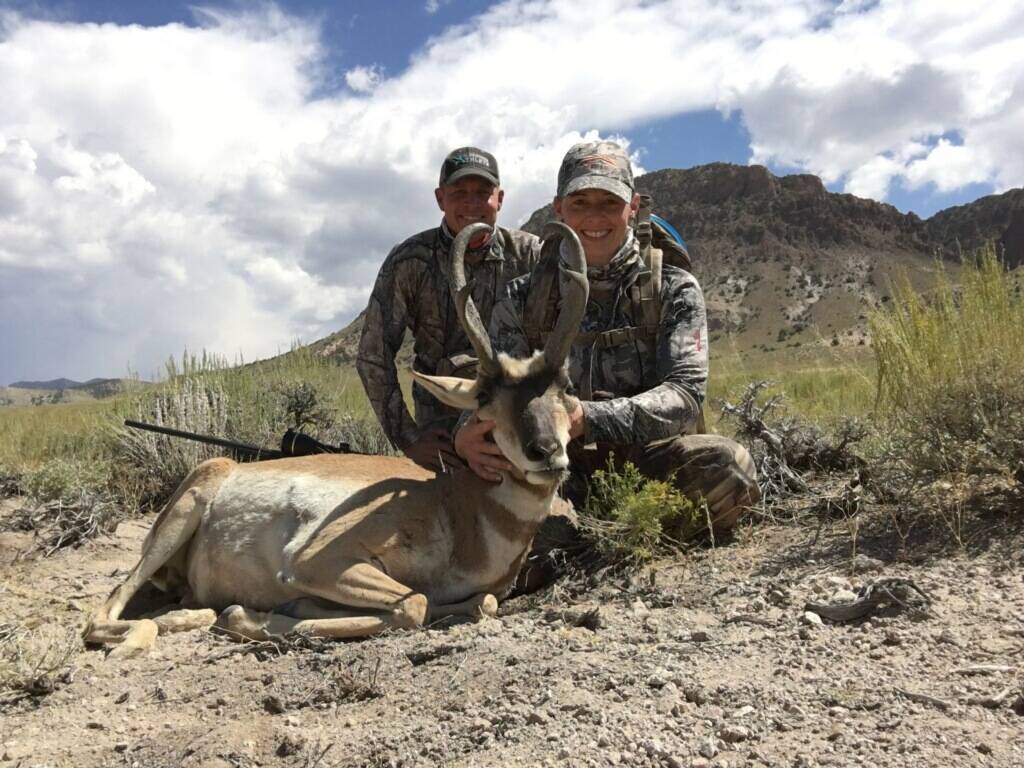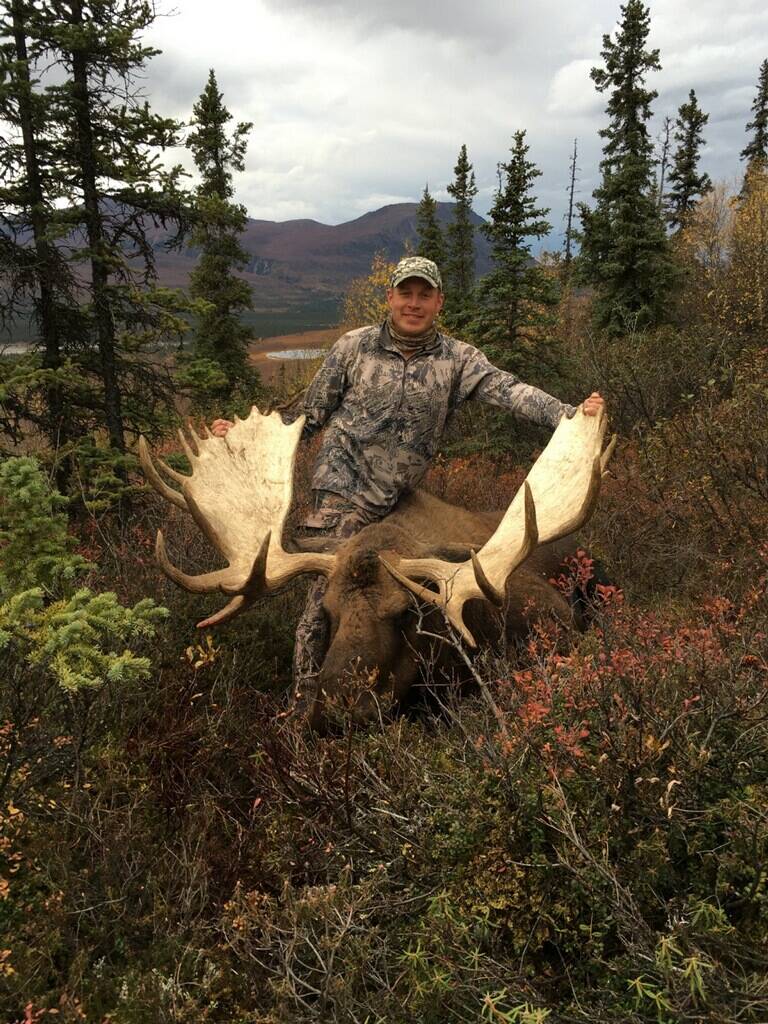Got that tag? Get ready to go hunting
You have a hunting tag, now what? Luck, skill and preparation.
If we were lucky, we drew that coveted local game tag. If not, we’ve made plans for an out of state, or out of country hunt; both have become more popular and reasonably priced and it’s not too late to apply to some states.
My good friend Ben Arata hunts well and hunts often. He applies for in-state and non-resident tags at the same time whenever possible to increase his chances of having a hunting opportunity.
We all know what needs to be done prior to a hunt, so consider this a checklist. We’ve all also had the experience of neglecting one of these items and lost time, or that once-in-a-lifetime hunting opportunity.
The list of categories include: firearm (rifle, bow, black powder, even spear or rock if that’s what you choose to hunt with); getting in shape; equipment and transportation.
Start with your rifle or shotgun. Make sure the bolt, lever, or pump action feeds smoothly with a full magazine and, equally important, with a single cartridge. I had an unfortunate experience when I discovered a weak spring on my magazine would false feed the last cartridge, causing me to go home empty-handed. This is often the result of leaving a magazine full for an extended period, causing the spring to compress and lose strength. The message: always remove cartridges when not being used.
Next, check the stock and recoil pad for loose screws and closely examine the rear tang for any looseness or cracking. This can lead to more serious problems, including a broken rifle stock, but it’s amazing what a little epoxy can do. While a friend was sheep hunting in the Yukon he was able to repair his broken stock, after his horse rolled on it, with a reinforcing pin fashioned from a dowel and epoxied.
A well-functioning rifle is not of much use if the sights are off. This is often caused by the mount screws being loose. Make sure they are secure and use a Lock Tite product to keep them that way, but don’t over tighten them; a stripped thread is not good, but a broken screw is even worse.
If your scope is still not zeroed after tightening the screws and making the proper adjustments, you may have an internal scope problem. I like a set of fixed sights as a back-up in case this happens in the field or while traveling. If your scope has an internal problem send it back to the manufacturer. Leupold and other quality scopes now have a lifetime guarantee and the manufacturers are great about servicing their products. Start your preparation early to make sure you get it back in time for the hunt. They’ll work with you.
While sighting in, use a bore sighter to get you in the general area of the target; it could save you a lot of ammo just getting on the plate, but don’t take it for granted that a bore sighter will put it in the target center. That’s done by shooting live rounds, and the same ones you’ll be using in the field. This will also give you a chance to check the strength and functioning of the floor plate, if you have one. They have a nasty habit of becoming fouled and dropping your ammo on the ground at times that could be embarrassing, especially when hunting dangerous game.
With a light coat of oil or dry lubricant you’ll be ready to go. I prefer oil in wet environments and the dry lubricant when hunting in cold conditions, as oil can harden.
Equipment: Careful consideration should be given to a sturdy gun case for traveling (Cabela’s catalog is a good place to start your research). A comfortable shoulder sling is also of great importance. I recommend not ordering the sling from a catalog, but taking your rifle to your favorite dealer and trying some on for size. If the fit isn’t right, as with hunting boots, you’re going to feel the pain. Just make sure the swivel attachments are solid and don’t interfere with bringing your rifle to shoulder.
Optics are as important as your rifle on some hunts, especially sheep hunts. You will often spend days peering through the scope and binoculars before finding the game you’re after. One rule, get the best you can afford. I would stay away from the bargain “good buys.” If you’re hiking or mountain hunting, consider some of the newer lightweight versions. I have a lightweight Leupold and find it ideal with a pair of quality compact binoculars.
Don’t forget the camera. There are many high-quality compact digitals on the market. Take your pick but make sure it’s waterproof and a size that fits in your pocket, or it will be back in camp when you need it.
When it comes to knives, it doesn’t have to be an expensive collector’s item and you don’t need a Bowie-sized knife either. A three-or four-inch sheath or folding knife is good for anything except carving up a cape buffalo or defending yourself against a charging elephant. Buy something solid with a good grip; a serrated saw blade is worth looking at too.
Unless you’re road hunting (shame), a backpack is your next most important item. Pockets and lightweight materials are what to look for, but fabric strength and strong zippers are most important. You’ll want it large enough to carry your “possibles” which will include a first aid/survival kit (we’ll talk about that in a future column), some strong cord, a water container (not disposable plastic) and some lunch or dinner if it’s an overnighter. If you’re planning on backpacking your game out, there are many good options. Cabela’s catalog is again, a good place to start looking.
Did you put your tent and sleeping bag away properly after your last camping trip? Now is the time to make sure. Don’t wait to find out on your first night that the bag is musty and the tent has missing poles or other parts and the zippers don’t close, Yep, I’ve made that mistake too.
And finally, all of this is of little importance if you can’t get to your hunting area. These days it’s all about transportation (we’ll do that in a future column too). Whether it’s a four-wheel Dodge Ram, Jeep or a quad, you know what you should always do; just do it. Take extra care checking its cooling system, tires, battery and air filters. Remember some extra gas too.
Do these things early and you’ll have a more relaxed and successful adventure when the day of the hunt finally arrives.
Good luck and good hunting!
Here’s a recipe I’ve unfortunately had to eat often, but which could be improved with some fresh, tender wild game meat, but that doesn’t always happen. That’s why they call it “huntin’. Did I mention, I didn’t draw a local tag this year, again, but I’m still working on it and remain hopeful.
This is an old family standby though, which will warm both the belly and the soul.
Dan’s Humble Pie
1 pound round steak, cut into small cubes
3 cups flour
1 tsp. salt
1 cup lard
1/3 cup cold water
3 medium potatoes, diced
1 large onion, diced
1 cup diced carrots
2 Tbsp. butter
Salt and pepper
Make pastry from flour, salt, lard, and cold water; be careful not to make the pastry too moist; divide into four even sections, roll out each into a 1- inch thick circle; place on one half of each pastry equal amounts of potato, onion, carrots and beef; top with butter, salt and pepper; fold other half of pastry over filling and seal by pressing tines of fork around edges; cut a small hole in the center of each; bake at 350 degrees oven for approximately 30 minutes.
Dan Simmons is a freelance writer in Pahrump. His columns appear in the Pahrump Valley Times on the first Friday of the month.


















